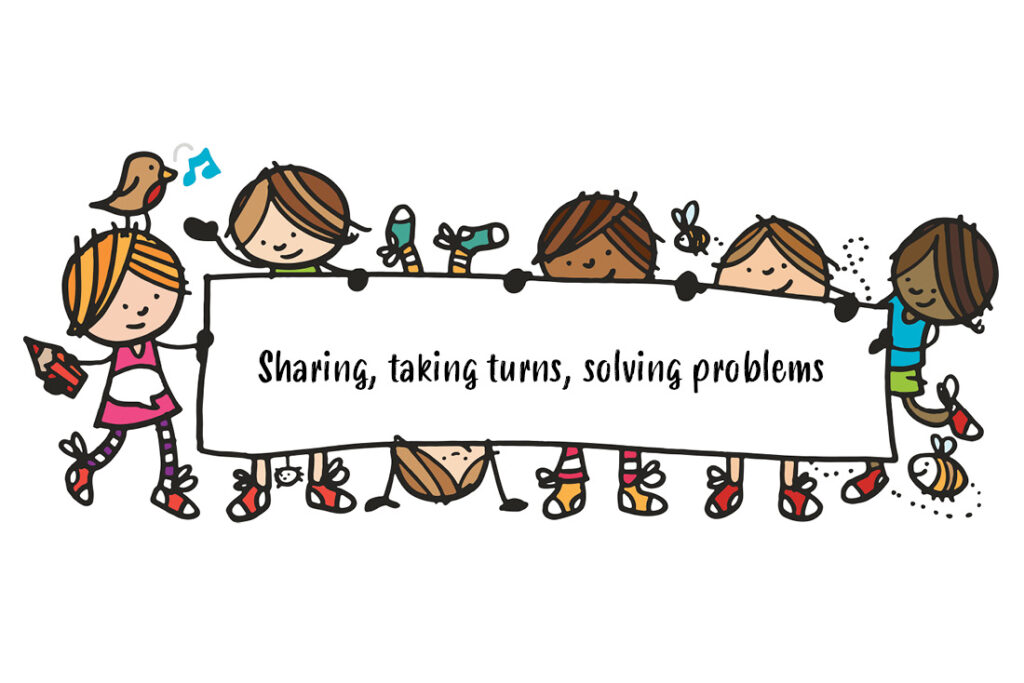Play by any other name
Embracing The Play Principles Beyond the Early Years

Every child has the fundamental right to play. It is in the United Nations Convention on the Rights of the Child (Article 31, if you want to check). Not only is it important for enjoyment and fun, but vital for child development. It is generally accepted that play is an important aspect of development within the first eight years of a child’s life. During this time, cognitive skills, social skills, emotional wellbeing, physical motor skills and mental health are all being acquired, building the foundations for future years.
Play can be defined in different ways, but it is generally agreed that play is a process whose key elements are that it is freely chosen, personally directed and intrinsically motivated. But these elements are often considered in the learning opportunities we provide for our older learners too – pupil voice, pupil-led, independent and self-directed learning. We just might not call it play. We want our learners, of all ages, to be able to motivate themselves, to direct their own learning and to make good choices, don’t we?
Play can be used to incite curiosity, raise engagement, and ultimately raise attainment. It can also help children make sense of what we are trying to teach them and allow them to apply it to their own world. Why should this stop after the early years? Apart from anything else, play is fun. Playful learning engages children and engaged learners understand and retain more.
When children play, on their own or together, they learn a whole raft of skills:
Sharing, taking turns, solving problems, what they like/don’t like, managing their emotions, winning/losing, risk taking/ avoidance, resilience, conflict management, how to work with others/entertain others and how to be alone/entertain themselves. I could go on and on, but you get the idea.
Play is essentially opportunity and experience – trying things out, exploring, investigating, and experimenting. It can offer older learners the challenge to enhance their learning if they are provided with the opportunity and materials to do so in a contextual manner. Time to measure, write, research, or create, free from constraints can undoubtedly help embed learning more securely. And this can lead to more effective retrieval of learning later on.
And what if we took these principles of play – choice, motivation and drive all coming from the learner themselves – but gave ‘play’ a different name, would we as upper stages educators feel better about employing it as a pedagogy? Developmentally Appropriate Teaching? Real-Life Application of Learning? Independent Learning Experiences? Contextual Learning Opportunities? In providing materials and resources the pupils have free access to, they can put what they have learned into a context that helps them understand it, retain it and hopefully be able to apply it in real life or at least in context.
Whatever you want to call it, and however it looks in your classroom, the principles remain the same. And with an approach like this in our classrooms, are we not then looking at pupil voice, contextual understanding and transference and application of skills? All vital to the raising of attainment and engagement within our schools.
Play in the upper stages doesn’t have to add to our workloads. By allowing pupils an element of choice in where or how they complete their work, opportunities to extend their learning on something they have enjoyed, variation in the amount of teacher input provided to learners – these all encourage learners to drive their own learning in their own way. Create a space where exploration, questions and investigation are encouraged, mistakes are a comfortable part of learning, and pupils feel safe to make suggestions and ask questions.
Providing a context for learners to explore and play with concepts we teach them, will help them make sense of them in ‘real life’ and hopefully retain them for future use and recall it when required. Create the right environment for your learners and they will learn from their own investigations, but they will also learn from their peers and their environment if they are given the opportunity to. Support your learners to reflect on their learning and progress in order to revisit it and build on it.
Michelle Simpson (Dundee)
Michelle has worked with children for almost 25 years, and as a teacher for 14 years. She has undertaken research and study in supporting learners, inclusive pedagogy and pupil participation. She has written a book about her experiences with the play principles in the upper stages, Play by Any Other Name and documents her learning journey on Instagram @mrs_s_learns and Twitter @Meesh_Simpson
Don’t be robbed of your tax rebate

Many teachers don’t realise that they are entitled to a tax rebate of £200-300 a year. Unfortunately, some unscrupulous tax companies do, and they will encourage you to fill in a form online to see if you’re entitled to a rebate.
What people don’t realise when they fill in this form is that they are inadvertently giving the tax company permission to collect their tax rebate from HMRC for the next five years – a sum that can easily total £1500.
The company will apply to HMRC directly for your tax rebate, which will be sent to them. If you’re lucky they may send you 50% of the rebate, but some unscrupulous companies have kept the entire amount. Indeed, so concerned is HMRC about the activities of some of these firms that they have actually banned some of them.
However, there is no need to get someone else to claim a tax rebate on your behalf. Around May or June your employer will send you a P65. This form states the name and address of your employer, the amount you have paid in tax and national insurance and your unique taxpayer reference number (UTR). This is the information that you need to claim your tax rebate directly from HMRC.
Next go to hmrc.gov.uk and register to fill in a personal tax return. When you register HMRC will provide you with a log in for HMRC online services. They will ask you to set up a password and, as they operate two step verification they will also ask for a phone number so that, when you login, they can send you a one off six number code.
Once you have registered you simply go to hmrc.gov.uk and sign in. You then go to Fill in a tax return and get started. When you get to the section about employment, use your P65 to fill the name and address of your employer, the amount of tax you have paid and the amount of national insurance you have paid.
Then go to the section on expenses in employment. Total up the cost of your GTCS registration, your trade union membership and membership of any relevant professional societies. If you are a science, home economics, art or technical teacher, you can also add £60 for the cost of laundering any white coat or overalls you use at work. If you are peripatetic and don’t have access to a base to photocopy and print materials and have to use your own phone to call schools and parents etc. you can also claim for these expenses (but keep receipts). HMRC will usually allow you to claim one third of the cost of your phone bill.
If you have a large amount of bank interest, you may have to enter this as well, but bank interest up to a certain level (dependent on your income) is not taxed.
The return will then ask for your bank details and you will have to provide these, plus tick the declaration that you have filled in the form accurately as far as you are aware. You then have a chance to check over your return, and once you are happy with it, you simply click submit and it will go direct to HMRC, who will then send you your tax rebate to your bank account, rather than to a company who will keep a large chunk of it!
Sheila Waddell, Glasgow
